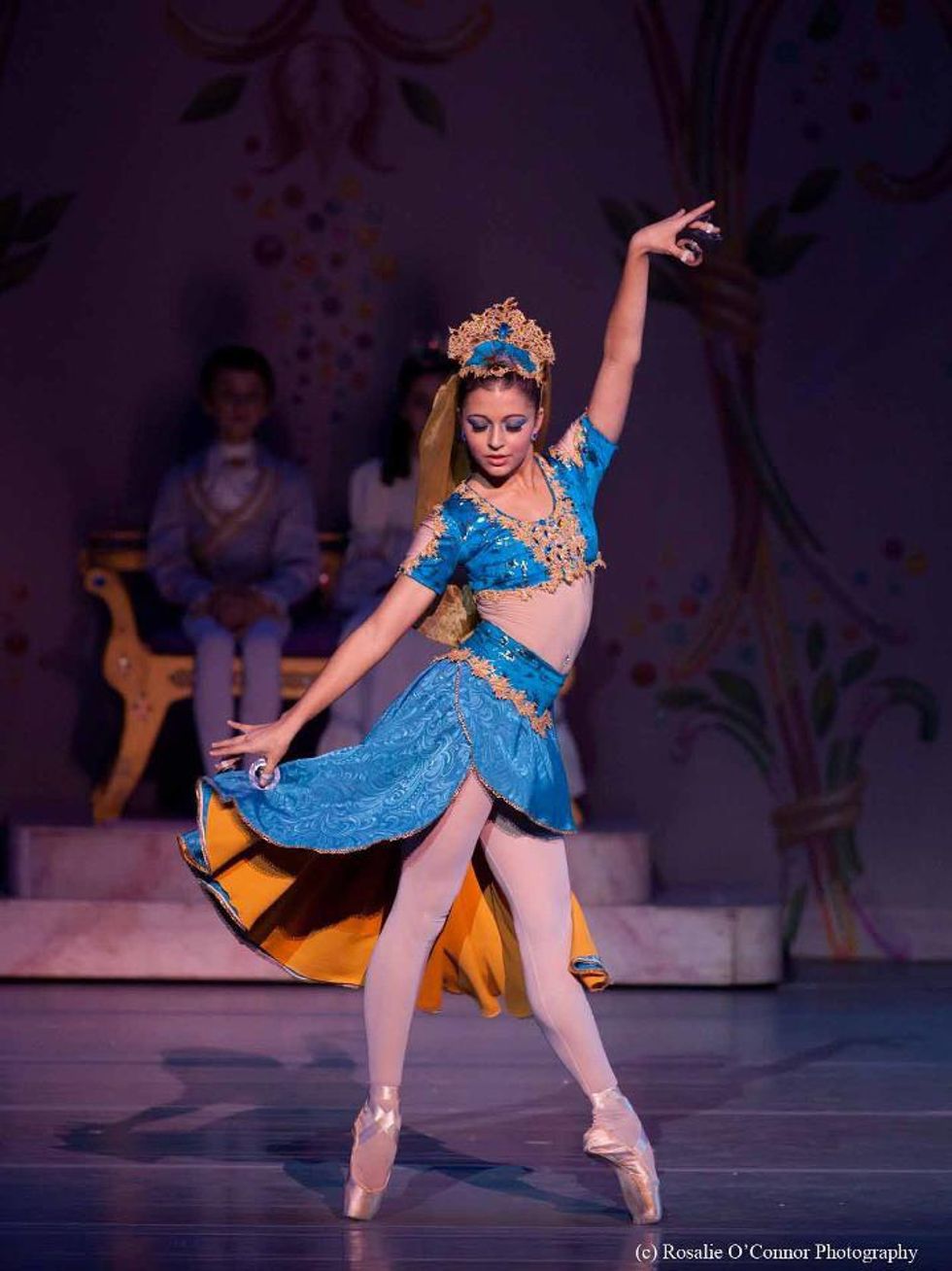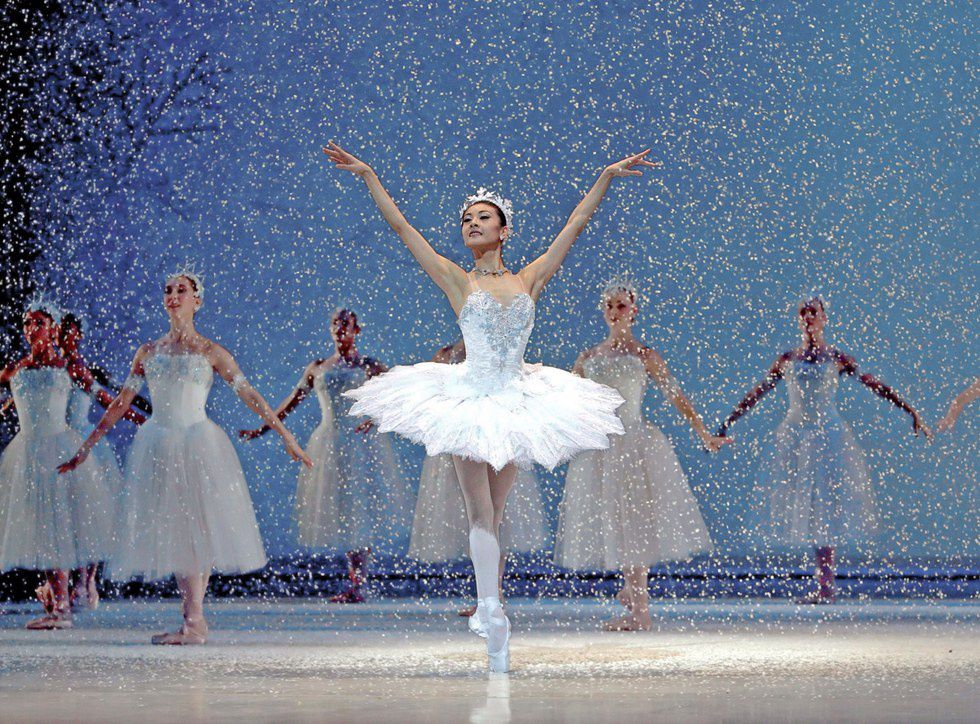"The Nutcracker." Seasoned and aspiring ballet dancers, new audience members, and balletomanes alike will know the name. Many young dancers cite "The Nutcracker" as what inspired them to get into ballet. Who wouldn't want to become a ballerina after watching it? It's dazzling and dizzying, between the costumes, the twirls, the jumps, and the various solos. There are so many roles to imagine oneself in, from Arabian Coffee to lead Snowflake to the illustrious Sugarplum Fairy. The partner work is intricate and effortless, but any current or former dancer knows the grueling number of hours any member of the corps must put in, both in and out of the studio, let alone soloists and principals. "The Nutcracker" has entranced audiences since E.T.A. Hoffman wrote the original story, titled "The Nutcracker and the Mouse King." Alexandre Dumas, père, wrote a lighter adaptation, which he called "The Tale of the Nutcracker." This version was choreographed and adapted into a full-length ballet, which premiered at the Imperial Mariinsky Theatre in St. Petersburg, Russia.
The irony is this: After its first performance in 1892, "The Nutcracker" wasn't received well at all. It wasn't until the ballet was adapted by various other giants outside Russia that it began to take off. George Balanchine's version of the choreography for his New York City Ballet is the most well known, but balletomanes will also recognize that Rudolf Nureyev also choreographed a version for the American Ballet Theatre. After the NYCB and the San Francisco Ballet both put on wildly successful performances of "The Nutcracker" on Christmas Eve in 1954, the tradition of staging the ballet during the holiday season spread to grow into what could perhaps be considered the blockbuster ballet of the dance world.
Indeed, both performing in and going to see "Nut" has become an institution. This holiday season, my friends and I bundled up, camped out early, and by some stroke of luck were able to secure student rush tickets to Boston Ballet's production. In the hours before the show, the Opera House was beautifully decorated, with as much "Nut" merch as any child or adult could possibly want. Audience members ranged from excited children, starry-eyed teenage ballerinas, regular ballet-goers, and newcomers to dance. And as I settled in to watch this re-imagined performance of a classic, I was reminded why "The Nutcracker" will always be just that.
As soon as the first note for the Waltz of the Snowflakes was struck, my eyes welled up. Anyone who has danced "The Nutcracker," professionally or in a small local studio, knows that nothing compares to that first glimpse into the Land of Sweets. Not even most other solos. Corps member or lead snowflake, the waltz is just as magical to dance in as it is to watch. Between the falling snow, the voluminous, bedazzled white tutus, and quick, fast-paced, yet still utterly graceful and entrancing choreography meant to resemble a snow storm, there is no other number that makes a ballet dancer feel more beautiful. If there's anything I miss most about being part of a studio, it's rehearsing the fast-paced choreography and the white tutus that made me feel the most graceful I've ever felt in my life as a dancer.
Perhaps the only other solo that could compare is the Arabian Coffee. This is perhaps the most alluring, sensual, yet utterly mesmerizing and graceful solo in the ballet (except for the Sugarplum Fairy). The music and the choreography is nowhere near as tokenizing as it is for the Chinese Tea number. Rather, it's a beautiful homage to culture and heritage. The same can be said for Spanish Coffee -- the music is light and sprightly, the choreography full of tight, quick turns, plenty of jumps, and intricate footwork.
And then, of course, there is the Sugarplum Fairy -- the most important, most sought-after role in the entire ballet. It often goes to a principal -- the night I saw "Nut," the amazing Dusty Button danced the Fairy. She is a dream come true, beautiful and glittering and graceful, a sea of pink and gold and impeccable extensions and turnouts and form. Her pas de deux is the most intricate, difficult, and yet effortless of all. It's no wonder, after watching a performance that was too magical to be done by a human, that one would want to one day do the same thing.
So yes, it may be true that the seasoned balletomane, even the experienced ballet dancer, would never really openly admit to loving "The Nutcracker." There are so many more deeply emotional, rich, meaningful ballets such as "Swan Lake," "Sleeping Beauty," "Cinderella," "La Sylphide," and the list goes on. And yet there's a reason that for most professional companies, "The Nutcracker" brings in 40 to 50 percent of the season's revenue. Something about it simply has a magical quality that other ballets lack. Perhaps the magic is that one doesn't have to be a ballet dancer to love "The Nutcracker" -- it's so easy to imagine yourself a part of the fairytale no matter what your age or experience.









































